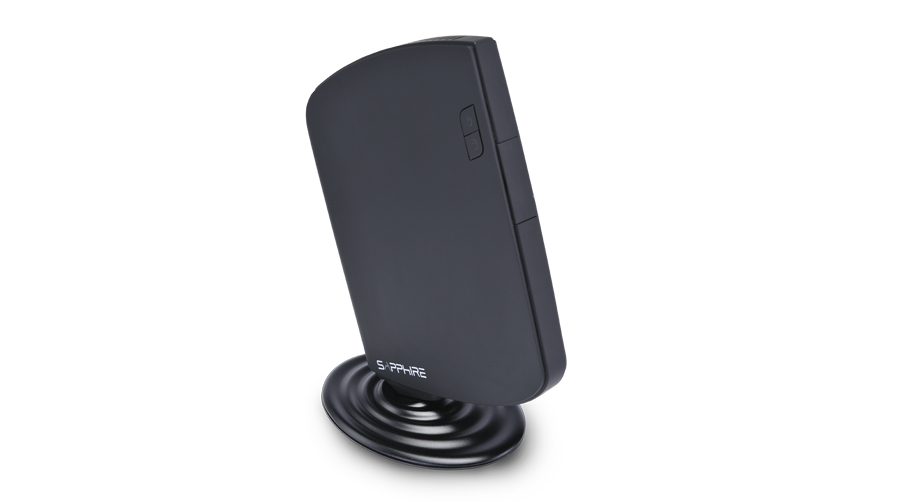TechRadar Verdict
Pros
- +
Tiny form factor
- +
USB 3.0 support
- +
Improved graphics
- +
Decent performance
- +
Connectivity
Cons
- -
USB 3.0 driver issues
- -
No OS installed
- -
Performance could be better
Why you can trust TechRadar
When Sapphire launched the first Edge-HD mini PC back in early 2011, it claimed it was the world's smallest PC - and at under half a litre in volume, it was hard to disagree.
A year on, we now have the third generation of Edge HDs: the HD3. It forsakes the Intel power of the first two models, and is instead powered by one of AMD's latest E-450 APUs running at 1.65GHz.
When we say 'mini PC', we really mean teeny-weeny. The HD3 is roughly the size of a paperback book, but a lot thinner - War and Peace it ain't. Its curved design is very tactile, and thankfully Sapphire hasn't given it the usual glossy grand piano finish, so it won't become a fingerprint magnet.
Instead it has a more user friendly rubberised shell. Weighing in at a mere 530g, it also feels comfortable in your hand - or in your coat pocket - and there aren't many PCs you can say that about.
Business or pleasure?
Sapphire pitches the Edge HD3 at home, business and educational uses, and the machine features the 1.65GHz AMD E450. That's backed by 4GB of DDR3 memory, and certainly has enough power to handle everyday home and office chores. Just don't expect it to render large scale images or to be able to handle heavy video-editing duties.
One big advantage of Sapphire switching from the Intel Atom platform to the AMD E-450 is the integrated HD6300 graphics. This portion of the APU is much more capable than the integrated Intel solution found in those earlier iterations.
Benchmarks
CPU encoding performance
X264 v4: Index score: Higher is better
Sapphire Edge HD3: 3.20
Zotac ZBox ID80 Plus: 3.56
CPU rendering performance
Cinebench R11.5: Index score: Higher is better
Sapphire Edge HD3: 0.63
Zotac ZBox ID80 Plus: 0.72
Memory bandwidth
SiSoft Sandra: GB/S: Higher is better
Sapphire Edge HD3: 4.27
Zotac ZBox ID80 Plus: 4.15
In this case we're not thinking so much about gaming - although it does support DX11, so you might just about get away with some undemanding casual gaming at low resolutions and settings. No, the main advantage to this graphics sub-system is the multimedia support it offers - especially 1080p video playback.
Another point in the HD3's favour is that it uses under 30W even when it's running at peak performance. It draws under 20W when idling, which is a huge reduction compared to a run-of-the-mill desktop.
A quick scout around the rear of the HD3 shows just how much the wee thing has to offer. You get VGA and HDMI outputs, a couple of USB 2.0 ports, a LAN port for the wired Gigabit Ethernet, a couple of audio ports and the aerial socket for the b/g/n Wi-Fi. You'll also find a pair of USB 3.0 ports sitting under a flap at the front of the unit.
The inclusion of two USB 2.0 and two USB 3.0 ports works well enough when there's an operating system installed, but it causes one or two niggles beforehand. The USB 3.0 drivers can only be loaded once an OS is installed, so you need to keep swapping between whatever you have the OS on, the keyboard and/ or the mouse.
The Edge HD3 is very well designed, and as long as you don't set your expectations too high, it's the ultimate space-saving PC. It still has enough grunt for everyday office jobs, and thanks to the HD6300 graphics, it can handle 1080p without missing a beat as well.
Follow TechRadar Reviews on Twitter: http://twitter.com/techradarreview
